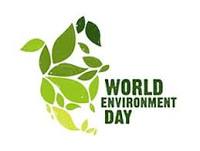In many parts of the world there is no better time to work on your mojo than on the longest day of the year. In Belarus girls and boys take the opportunity to celebrate the midnight sun on Ivan Kupala Day by bathing in lakes
In the Northern Hemisphere, the summer solstice has a history of stirring libidos, and it's no wonder. The longest day of the year tends to kick off the start of the summer season and with it, the harvest. So it should come as no surprise that the solstice is linked to fertility -- both of the vegetal and human variety -- in destinations around the world.
"A lot of children are born nine months after Midsummer in Sweden," says Jan-Öjvind Swahn, a Swedish ethnologist and the author of several books on the subject. Midsummer is the Scandinavian holiday celebrating the summer solstice, which this year falls on June 21. Swedish traditions include dancing around a maypole -- a symbol which some view as phallic -- and feasting on herring and copious amounts of vodka.
"Drinking is the most typical Midsummer tradition. There are historical pictures of people drinking to the point where they can't go on anymore," says Swahn. While the libations have a hand in the subsequent baby boom, Swahn points out that even without the booze, Midsummer is a time rich in romantic ritual. "There used to be a tradition among unmarried girls, where if they ate something very salty during Midsummer, or else collected several different kinds of flowers and put these under their pillow when they slept, they would dream of their future husbands," he says.
read more
What is a Solstice?
A solstice is one of the two times of the year when the positioning and tilt of Earth relative to the sun results in the most amount of daylight time or the least amount of daylight time in a single day. There are two solstices during the year: one that occurs around June 20–22 (usually June 20 or 21) and one that occurs around December 20–23 (usually December 21 or 22).
The solstices are traditionally considered to mark the start of summer and winter. But which season begins with each solstice depends on which hemisphere you’re in. In the Northern Hemisphere, the summer solstice occurs in June and the winter solstice occurs in December. In the Southern Hemisphere, it’s the opposite. The summer solstice results in the longest day of the year, meaning it has the most time of daylight, and the winter solstice results in the shortest day of the year, meaning it has the longest period of darkness.
In contrast, an equinox is one of the two times of the year when the amount of daylight and nighttime hours are just about of equal length. The two equinoxes occur around March 20–21 and September 22–23. In the Northern Hemisphere, the vernal equinox (or spring equinox) occurs in March and the autumnal equinox occurs in September. In the Southern Hemisphere, it’s the opposite.
read more





